Willows are a flowering plant, which is native to the northern hemisphere. These plants are known for being home to many species of birds that rely on them for food and shelter.
The willow tree, with its drooping branches, provides an ideal habitat for various bird species. Birds of willows are a diverse group that includes woodpeckers, finches, warblers, and thrushes.
These birds are particularly adapted to living in and around willow trees and have distinct behaviours, calls and plumage to help them thrive in this environment.
In this article, we will explore the fascinating world of birds of willows and learn about their unique adaptations and importance in the ecosystem.
1. Tit
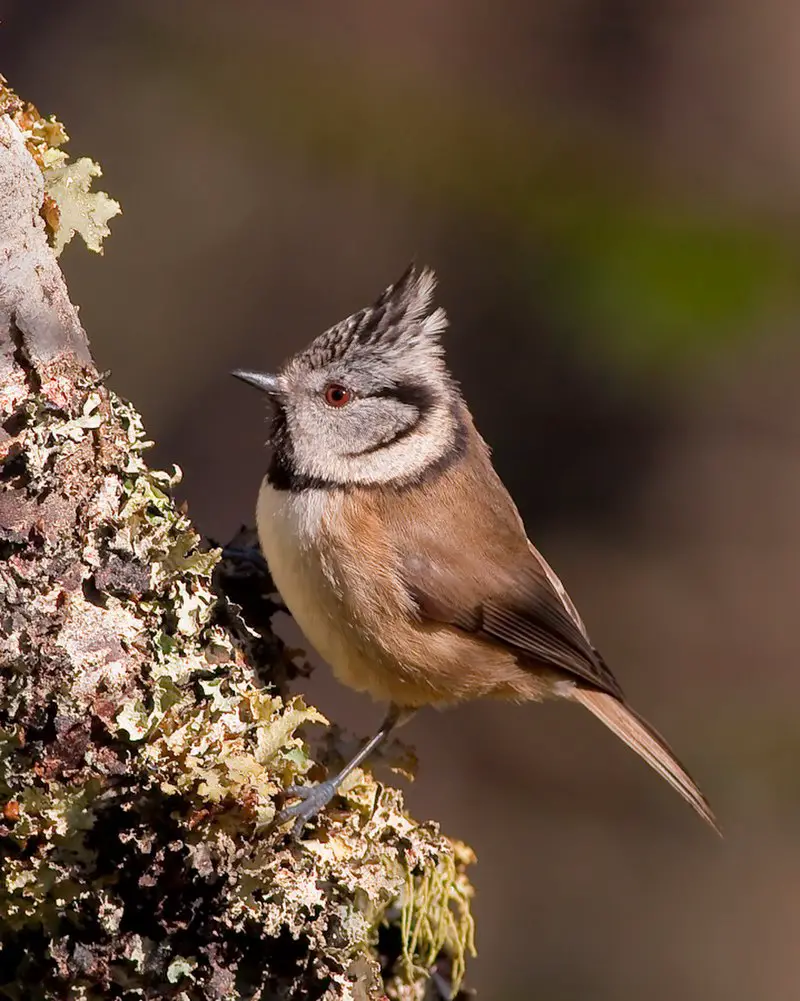
Tit birds are small passerine birds belonging to the family Paridae, found mainly in Northern Hemisphere and Africa.
These active little birds can be seen singing sweet songs throughout the day or scavenging for food at feeders.
They have short, stout bills which they use to crack open seeds and nuts with ease. Tit species range from chickadees to titmice; all of them sport a distinctive black head cap that stands out against their pale grey bodies.
Their bright eyes allow them excellent vision while searching for food – even on gloomy days when other predators may not see as well.
Tits are an important part of any healthy ecosystem and provide many ecological services such as insect control and seed dispersal.Scientific classification:
| Kingdom | Animalia |
| Phylum | Chordata |
| Class | Aves |
| Order | Passeriformes |
| Infraorder | Passerida |
| Family | Paridae Vigors, 1825 |
Also Featured In: Birds of United Kingdom, Most Common Winter Birds
2. Willow Tit
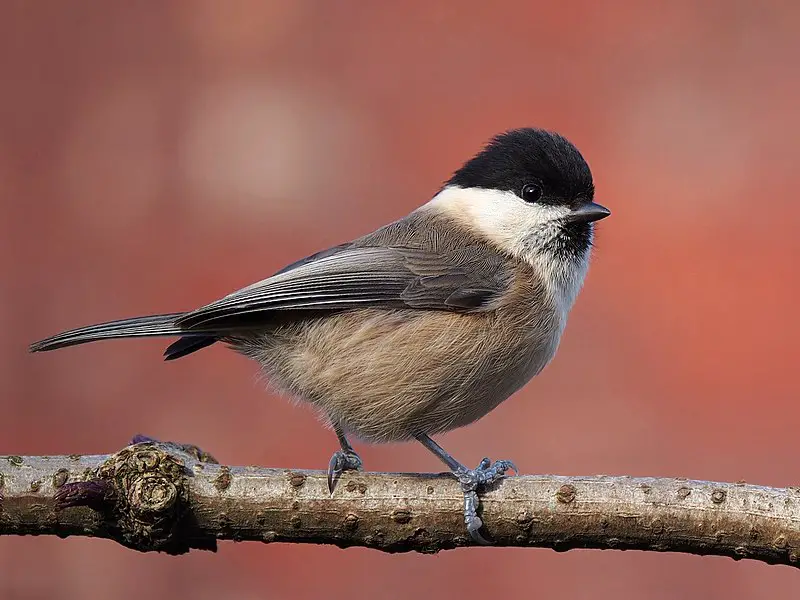
The Willow Tit is a passerine bird belonging to the tit family, Paridae. It has grey-brown and off-white plumage with a black cap and bib.
This species is widely distributed across temperate regions of Europe, subarctic parts of Eurasia and Palearctic areas.
It usually resides in coniferous forests or adjacent habitats such as young birch woodland.
The Willow Tit prefers open stands of trees compared to its relative Marsh Tit which explains why it can be found further north than other species while still thriving successfully all year round.
Its diet consists mainly of insects but also includes seeds, nuts and berries during winter months when food sources are scarce making them very adaptable birds indeed.Scientific classification:
| Kingdom | Animalia |
| Phylum | Chordata |
| Class | Aves |
| Order | Passeriformes |
| Family | Paridae |
| Genus | Poecile |
| Species | P. montanus |
Also Featured In: Common Birds Found in Switzerland,
3. Willow Warbler
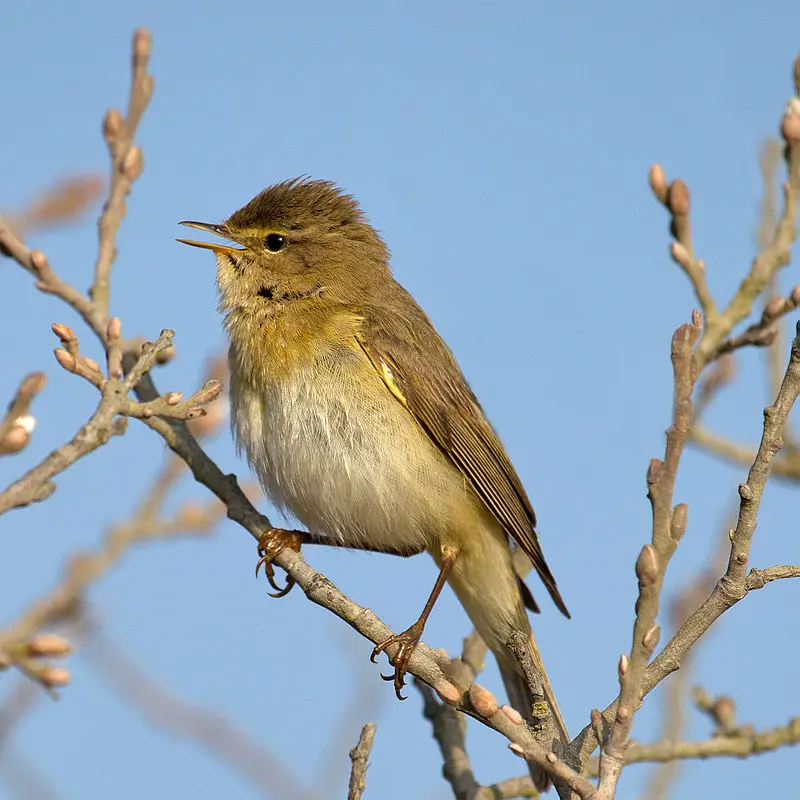
The Willow warbler is a small, colorful bird found throughout much of northern and temperate Europe. It has yellowish upperparts and whitish underparts with brown streaks on its breast.
In the summer months it migrates to breed in open woodlands with trees for nesting.
During winter season, most of the population fly south to sub-Saharan Africa where they will stay until spring comes around again when they make their way back northward once more.
They feed mainly on insects but also sometimes eat seeds or berries during the colder months when food can be scarce.
The Willow Warbler is an important part of our ecosystem as many birds rely upon them for food while migrating through different areas across Europe each year.Scientific classification:
| Kingdom | Animalia |
| Phylum | Chordata |
| Class | Aves |
| Order | Passeriformes |
| Family | Phylloscopidae |
| Genus | Phylloscopus |
| Species | P. trochilus |
Also Featured In: Norway Birds, Ukrainian Birds You Should Know
4. Alder Flycatcher
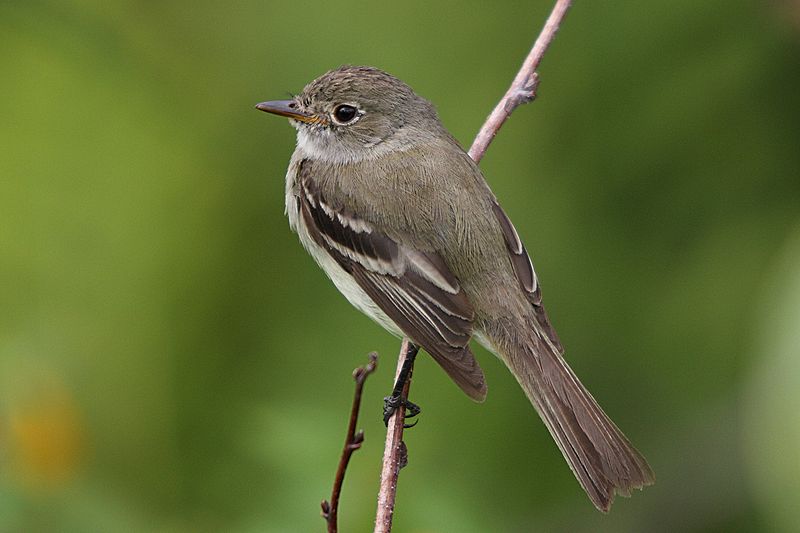
The alder flycatcher is an insect-eating bird belonging to the tyrant flycatcher family. It has a length of 13–17 cm and weighs 12–14 g, with its wingspan ranging from 21–25 cm.
This species can be identified by its greyish brown upperparts and white underparts, in addition to yellow wing bars on each side.
Its bill is dark grey with a black tip, while its legs are pinkish or light gray in colour.
The call of this bird includes both high pitched whistles as well as chirps that sound like “spizik”.
During the breeding season it prefers wet woodlands near water sources such as rivers, streams or lakes – where it builds cup shaped nests within shrubs close to ground level.
These birds feed predominantly on insects but may also occasionally consume fruits during winter months when their preferred food source becomes scarce.Scientific classification:
| Kingdom | Animalia |
| Phylum | Chordata |
| Class | Aves |
| Order | Passeriformes |
| Family | Tyrannidae |
| Genus | Empidonax |
| Species | E. alnorum |
Also Featured In: Flycatchers Species, Adirondack Mountain Birds
5. Willow Flycatcher
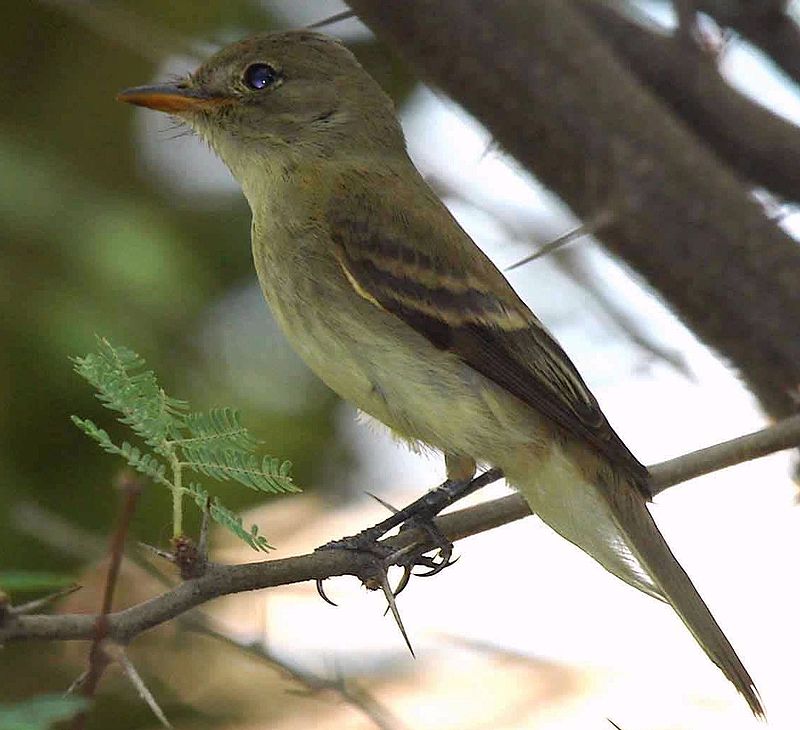
The Willow flycatcher is a small insect-eating bird belonging to the tyrant flycatcher family. It migrates from its neotropical home during summer months and breeds in North America, with three of its four subspecies found in California.
These birds can be difficult to identify by sight but their songs are distinctive enough for biologists to tell them apart easily.
The male willow flycatcher has an olive back, white underparts and yellowish legs while females have duller colors overall such as grey on the head instead of olive green.
They prefer open woodlands or river edges where they feed mostly on insects like flies, beetles and caterpillars which makes it beneficial for controlling pest populations near agricultural areas too.Scientific classification:
| Kingdom | Animalia |
| Phylum | Chordata |
| Class | Aves |
| Order | Passeriformes |
| Family | Tyrannidae |
| Genus | Empidonax |
| Species | E. traillii |
Also Featured In: Birds that Live in Yosemite National Park, Gray Birds that You’ll Find in Minnesota
6. Willow Ptarmigan
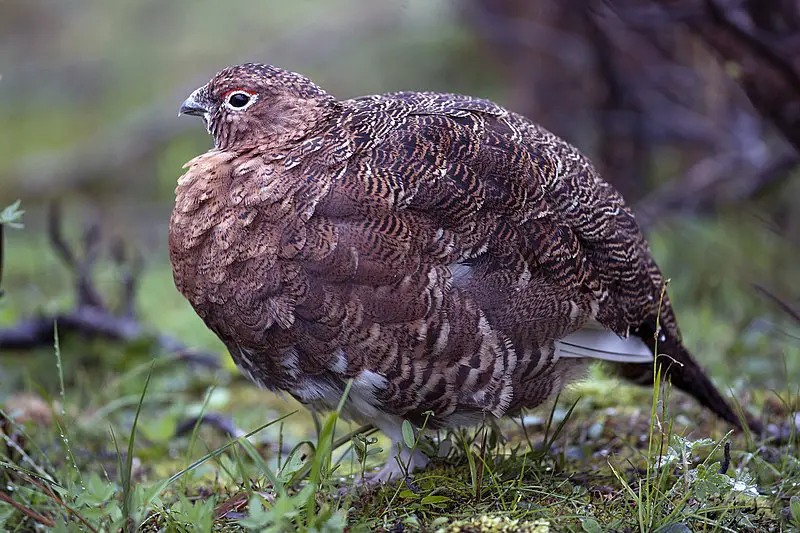
The Willow Ptarmigan is a bird belonging to the grouse family, Phasianidae. It can be found in northern Europe, particularly birch and other forests or moorlands regions of Scandinavia and Ireland.
The subspecies L. l. scotica was once considered its own species known as Red Grouse.
They are characterized by their red-brown plumage that changes with the seasons; during winter they grow white feathers for camouflage against snow cover while in springtime these change back to brownish tones for better blending into vegetation.
In general, this type of ptarmigan tends to live in flocks on open grounds where it feeds on buds and leaves from shrubs like willows, heathers and birches among others as well as insects when available .Scientific classification:
| Kingdom | Animalia |
| Phylum | Chordata |
| Class | Aves |
| Order | Galliformes |
| Family | Phasianidae |
| Genus | Lagopus |
| Species | L. lagopus |
Also Featured In: Alaska Birds, Common Estonian Birds
7. Rock Ptarmigan
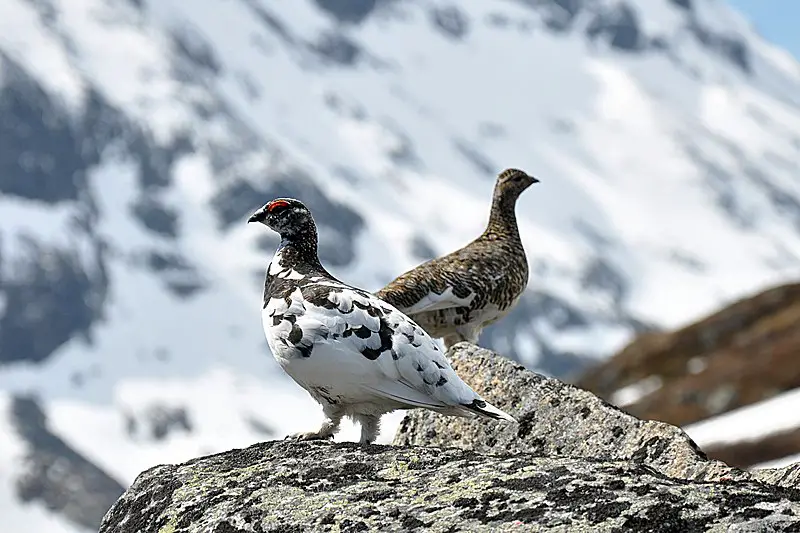
The Rock Ptarmigan is a medium-sized game bird in the grouse family, known simply as the ptarmigan in the UK.
It has been chosen as an official bird for two Canadian territories and provinces; Nunavut (aqiggiq) and Newfoundland & Labrador.
In Japan, it is referred to as raichō which means “thunderbird”. With its white plumage that changes to grey during winter months, it is easily camouflaged against snowdrifts or rocky terrain where they make their nests.
They mainly feed on plants like willow buds and roots but also take insects when available.
The females of this species are brownish with black markings while males have red combs above their eyes making them easy to identify.Scientific classification:
| Kingdom | Animalia |
| Phylum | Chordata |
| Class | Aves |
| Order | Galliformes |
| Family | Phasianidae |
| Genus | Lagopus |
| Species | L. muta |
Also Featured In: Most Common Scotland Birds, British Columbian Birds
8. Ptarmigans
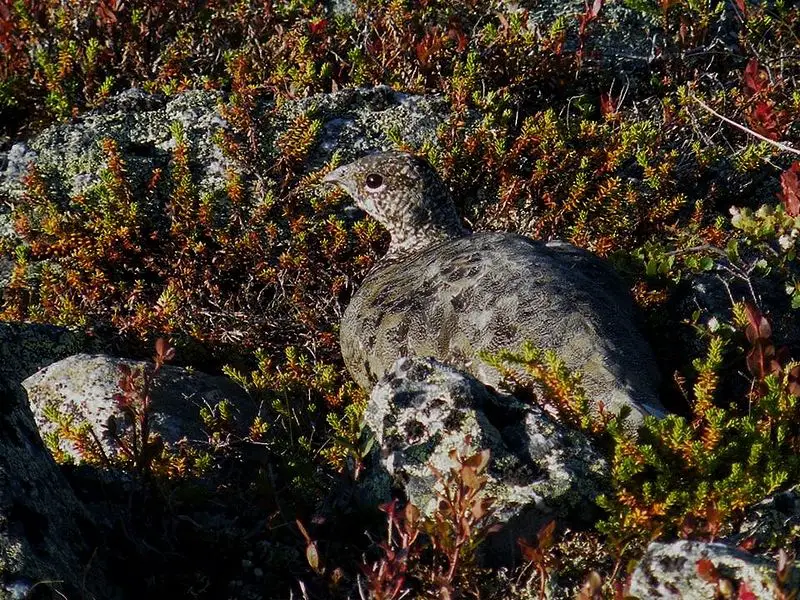
Ptarmigans are small grouse-like birds found in tundra and cold upland areas. The genus, Lagopus, has three species with many subspecies and was first introduced by French zoologist Mathurin Jacobs Brisson in 1760.
These ground-dwelling birds have feathered feet to keep them warm during the winter months.
They feed on plants such as grasses and sedges along with insects like caterpillars or beetles which they find among rocks or under snow cover when conditions are too harsh for other animals.
Ptarmigans also use their camouflage plumage to blend into their surroundings making it difficult for predators to spot them.
Although these unique creatures may not be easy to see, they provide an important part of high altitude ecosystems across the world’s northern regions.Scientific classification:
| Kingdom | Animalia |
| Phylum | Chordata |
| Class | Aves |
| Order | Galliformes |
| Family | Phasianidae |
| Tribe | Tetraonini |
| Genus | Lagopus Brisson, 1760 |
Also Featured In: Tundra Birds,
9. Empidonax Flycatchers
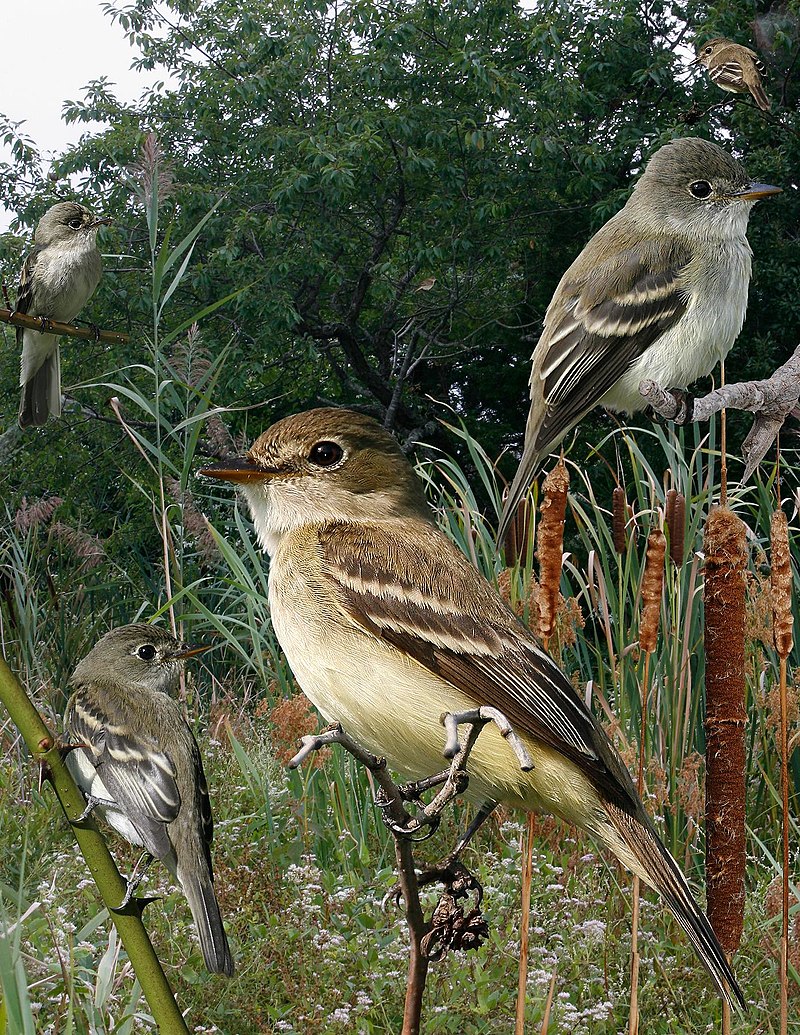
Empidonax flycatchers are small birds belonging to the tyrant flycatcher family, Tyrannidae. They are insect-eating passerines and are very similar in appearance with olive upperparts and light underparts, eye rings, and wing bars.
The genus name is derived from Ancient Greek words meaning “gnat” and “master”. Despite their similar plumage, Empidonax flycatchers can be differentiated by their range, habitat, and call during the nesting season.
These birds are known for their ability to catch insects while in flight, making them important in maintaining ecological balances.
Empidonax flycatchers play a crucial role in the food chain and are valuable for their biodiversity in various habitats such as forests, meadows, and wetlands.Scientific classification:
| Kingdom | Animalia |
| Phylum | Chordata |
| Class | Aves |
| Order | Passeriformes |
| Family | Tyrannidae |
| Genus | Empidonax Cabanis, 1855 |
10. Leaf Warbler
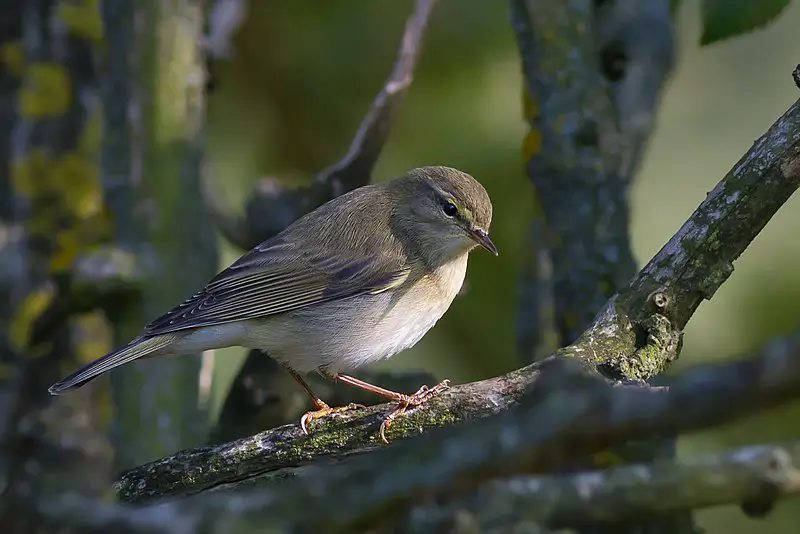
The leaf warbler is a small bird that primarily feeds on insects. It belongs to the genus Phylloscopus and was previously classified as a member of the Old World warbler family.
However, it has since been grouped in the family Phylloscopidae, which was introduced in 2006.
The family initially included the genus Seicercus, but all species have now been moved to Phylloscopus in the latest classification.
Leaf warblers are known for their agility, enabling them to flit about in the forest canopy in search of food.
Their small size also makes them vulnerable to predators such as birds of prey, snakes, and cats.
Despite this, leaf warblers manage to thrive in many regions of the world and have become a beloved sight for birdwatchers and nature enthusiasts.Scientific classification:
| Kingdom | Animalia |
| Phylum | Chordata |
| Class | Aves |
| Order | Passeriformes |
| Superfamily | Sylvioidea |
| Family | Phylloscopidae Alström, Ericson, Olsson, & Sundberg, 2006 |
| Genus | Phylloscopus F. Boie, 1826 |
Also Featured In: Common Algerian Birds ,